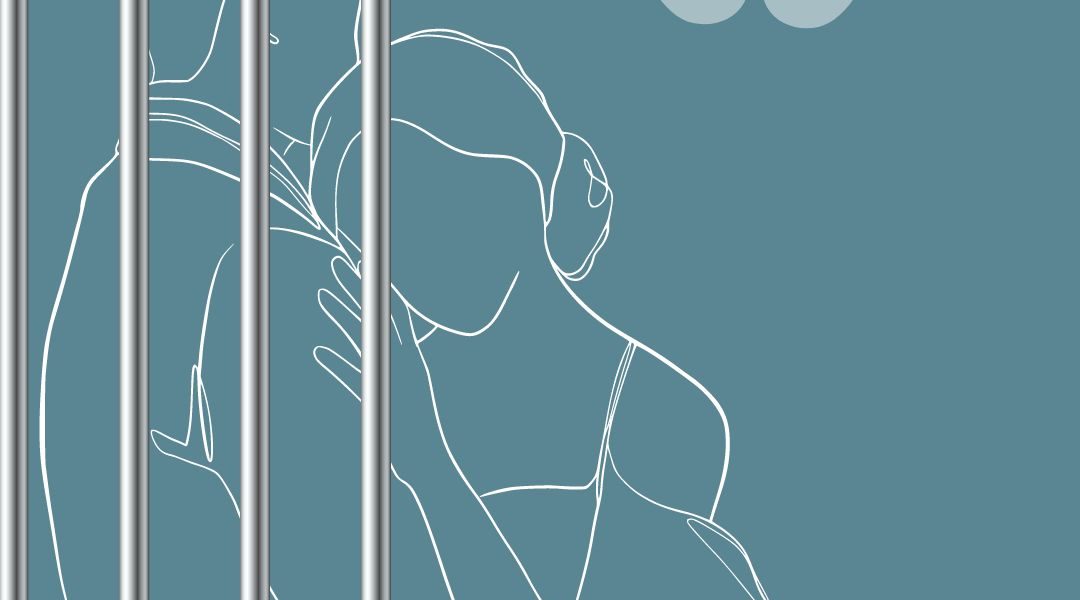Several High Courts have granted prisoners the right to procreate with their spouse, including it within the ambit of “personal liberty.” The article analyzes such jurisprudence as detrimental to the rights of prisoners’ spouses due to the lack of clarity on its nature and scope. It argues on the manifestly arbitrary nature of such expansion, advocating a more careful approach for courts by considering other stakeholders.
Judicial Ignorance to Gender Sterotypes
Assuming that this right to procreate is granted and realized, a logical follow-up arises- who is expected to raise the child after its birth? Referring to the guidelines the Court laid down in Kundan Singh, if the inmate is sent back to prison after procreation to complete his term, is the State putting the sole burden of raising the child on the spouse and family for that period?
Burdening the woman as the sole parent to raise the child not only creates a disparate impact, it also reinforces gender stereotypes revolving around her societal duties. Society has primarily viewed women as tools for reproduction and extending the family’s lineage. Assigning such stereotypical gender roles has relegated them to performing household duties, placing a disproportionate burden on raising children and looking after their welfare. This has led to disproportionate, excessive burdens on women in undertaking the task when compared to the father. Such stereotypes have inevitably influenced the conditions on which rights to women are granted the courts, including but not limited to RTP jurisprudence. For instance, in 1980s, a regulation for air hostesses to retire earlier than men had been formulated which was held constitutional since it allowed them to raise a family, and was considered by the SC to be in ‘public interest’. However, the judiciary has subsequently found such reinforcement of stereotypes to be patronizing towards women, while suggesting different avenues of policy making as alternatives to them. When revisited, the SC held that pushing the burden of raising family solely on the woman patronizes them and perpetuates gender stereotypical norms, rendering it unconstitutional. The SC has opined on laws to be unconstitutional when they indirectly perpetuate patriarchal notions on women. It also held that alternatives not maligned with discrimination, despite imposing greater burden on the State, should be preferred over such laws. Creating parallels of this instance with the jurisprudence in question makes the pattern clear, as well the solution to it.
The HCs in Kundan Singh and other cases also implicitly reinforce gender stereotypes of raising a child by failing to answer this crucial question, and could have explored alternatives as mentioned above, such as providing additional guidelines on the child’s custody. This would have been especially imperative since such guideline is the logical corollary to granting the right. For instance, in Jasvir Singh v. State of Punjab, the Court suggested establishing open prisons for maintaining conjugal visits between families. Such prisons have been pioneering the reformative theory of punishment, and socially integrating convicts into the society. Such prisons would let the father play a role in the child’s welfare while avoiding stereotypes to operate via decreasing the woman’s burden. Yet, the Court was quick in granting the right without considering the impact and such alternatives.
The judiciary’s creativity in formulating this right under Article 21 ignores the detriments arising from lack of delineation. Even if not intended, the spouse faces the brunt of societal patronization, with courts providing scant recourse to them.
A Case of Judicial Arbitrariness
Underlining the adversities courts have created on the rights of the inmates’ wives helps us depict the constitutional infirmities underlying such jurisprudence. Such criticism is only complete when we test these infirmities against existing thresholds to prove their unconstitutionality. The arbitrariness doctrine has been previously applied only to executive orders and legislative actions. Hence, before scrutinizing the jurisprudence through the doctrine, it is important to delineate the reasons behind its application to judicial measures.
The SC has clarified in Naresh Shridhar Mirajkar v. State of Maharashtra (‘Mirajkar’) that a judicial decision only decides on the controversy between parties, and hence cannot impact any rights. However, several scholars have recognized the wave of unprincipled developments under Article 21 rights since Mirajkar, where the Court has gone beyond the function of resolving inter partes disputes, but has been eager to widen the spectrum of rights within the right to life alongside setting guidelines for their realization. These guidelines, similar to the ones in RTP jurisprudence, have sought legitimacy due to legislative vacuum on such issues, hence taking the shape of law. Since the Court has considered such guidelines akin to legislations, there should be no reason for not applying the checks and balances available against the legislature, on such guidelines as well.
The SC has held that legislations granting protective discrimination ought to be tested against the anvils of ‘manifest arbitrariness’ and ‘strict scrutiny’. Since the guidelines on RTP are meant to provide preferential treatment to a certain class of prisoners of an older age, it is a grant of such discrimination, thus can be tested on such anvils too.
The doctrine of ‘strict scrutiny’ applies on inarticulate State actions, where legislations ex facie unreasonable jeopardize a citizens’ liberty. It holds that laws having unreasonable impact are considered prima facie unconstitutional, with burden on the State to prove the contrary. To illustrate such impact, legislatures have previously banned women from being employed in institutions serving alcohol. The ban was not delineated clearly, and the law reinforced patriarchal notions under the guise of protecting women. This led the Court to hold that there was an unreasonable impact on certain section of the society.
The courts’ ignorance to consider the spouse’s consent, coupled with the burden of raising the child, jeopardizes their liberties arising out of the inarticulate nature of the guidelines, creating such unreasonable impact. Had the judiciary been wary of its duty to delineate the right, such issues could have been remedied. Unfortunately, this causes ‘strict scrutiny’ to operate on it.
Furthermore, ‘manifest arbitrariness’ is attracted by a disproportionate action done irrationally or without adequate determining principle. It can be applied by inquiring over the socially undesirable results of the action, and its reconciliation with the desirable results. As mentioned earlier, there is a lack of adequate reason, or in the doctrine’s words, the lack of “adequate determining principle” to restrict the RTP after one child is born, since the notion to extend lineage does not necessarily subdue at such juncture. This inevitably points to the restriction’s irrationality. Furthermore, the one child restriction, though meant to be applied against the prisoner’s right, inevitably ends up operating on the spouse as well. Thus, her right to extend lineage gets restricted despite not being behind bars, but as mentioned above, the Court does not delve into the restriction’s reasonability with respect to the spouse’s rights. This invisibilizes her, creating a disproportionate, excessive impact on her rights. Additionally, as mentioned above, the ignorance to second wives while establishing the RTP disproportionately impacts them as compared to the prisoner. This causes indirect discrimination against women that is lost sight of, and hence, a socially undesirable result. Though they could have been reconciled with the need to uphold a prisoner’s fundamental right, like for eg, in the aforementioned case of open prisons that would decrease such disproportionality, the lack of such reconciliation in the guidelines makes their arbitrary nature conspicuous. There is a lack of net positive impact in formulating such right, when the guidelines established towards realizing the right are narrowly focused and unconstitutional unless remedied.
Conclusion
In a country where the State’s measures in granting equal rights to women has continually proved inutile, the judiciary becomes the mode of last resort for them. Thus, courts undertaking the task of developing the spectrum of rights within Article 21 must be wary of the effects on our societal framework, to avoid pockets of indirect discrimination from arising. Though there lie several merits in granting prisoners the RTP, such right can only be constitutionally viable if a balance exists between itself and rights of those directly affected by it (For instance, the spouse here). Else any step forward is would occur after taking two steps backward.
Rishit Soni is an incoming third-year student at the West Bengal National University of Juridical Sciences, Kolkata. His interest lies in the fields of constitutional and criminal law.
Ed Note: This article has been edited by Jeetendra Vishwakarma and published by Abhishek Sanjay from the Student Editorial Board.







Right to procreate
Wow, interesting
Spor Habeleri,Güncel Haberler, Sondakika Haberleri
Atasehir bölgesinde ev arayisiniz var ise, sizlere atasehirsatilik.com sitesini kesinlikle öneririm. Satilik Daire, Dükkan, Arsa ve Ofis imkanlari ile Atasehir bölgesinde profesyonel emlak hizmeti saglamaktadir.
Atasehir bölgesinde ev arayisiniz var ise, sizlere atasehirsatilik.com sitesini kesinlikle öneririm. Satilik Daire, Dükkan, Arsa ve Ofis imkanlari ile Atasehir bölgesinde profesyonel emlak hizmeti saglamaktadir.